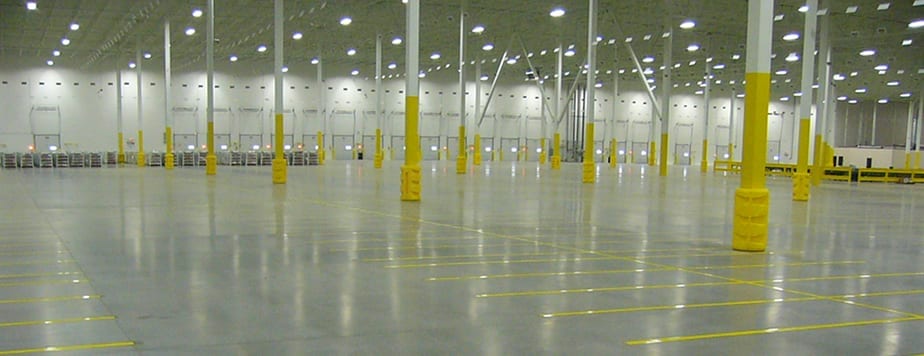Avoiding Concrete Cracks
Concrete will crack. The key is to get it to crack in the right place. Shrinkage is a main cause of cracking. As concrete hardens and dries, it shrinks due to the evaporation of excess mixing water. The wetter the concrete mix, the greater the shrinkage will be. Also, rapid drying of the slab will increase the possibility of cracking. Avoid pouring concrete on windy days and use a “liquid membrane” product to keep moisture in the slab.
Proper curing of the slab is essential. Do not pour on frozen ground. The expanded sub-grade will shrink when it thaws causing the concrete to cave in to fill the void. Tooled control joints or sawed joints are necessary to make the slab crack in the correct location. Proper joints are those that are at least one-quarter of the thickness of the slab. If joints are created at that depth at the correct time, the liklihood of cracking outside the joints is greatly reduced.
There are many more issues to consider when preventing cracks. Check out these great resources from The National Ready Mix Concrete Association “Concrete in Practice” Series
- CIP 4 – Cracking Concrete Surfaces
- CIP 5 – Plastic Shrinkage Cracking
- CIP 6 – Joints in Concrete Slab on Grade
- CIP 7 – Cracks in Residential Basement Walls
How Shelby Mitigates Concrete Cracks
There are new products in the market that can be added to concrete that can reduce the biggest problems owners have with floors. While cracking is impossible to avoid, much can be done to keep what cracks there are non-actionable. By non-actionable, we mean they are so narrow that no remediation is necessary.
A strategy we use to reduce curling and cracking is to minimize the total water and cement in a floor mix. We do this without sacrificing finishing quality or set time.
Concrete shrinks when it hardens. This shrinkage causes cracks. If the concrete strength is great enough or the shrinkage is small enough, cracks will be minimized.




